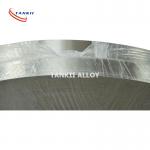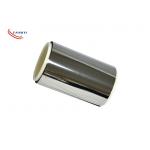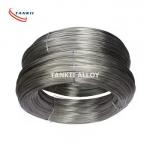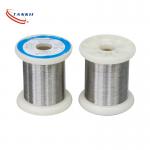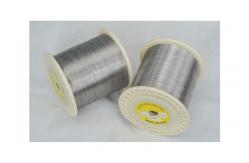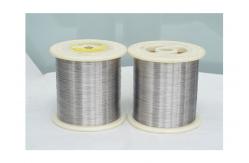1. Nichrome Alloy
Nichrome wire is made of a non-magnetic alloy composed primarily of
nickel, chromium, and iron. Nichrome is characterized by its high
resistivity and good oxidation resistance. Nichrome wire also has
good ductility after use and excellent weldability.
The number that comes after the Nichrome wire type indicates the
percentage of nickel in the alloy. For example, "Nichrome 60" has
approximately 60% Nickel in its composition.
Applications for Nichrome wire include heating elements of hair
dryers, heat sealers, and ceramic support in kilns.
2. NiCr 60
It is ideal for use as heating elements in household utilities and
in moderate heat, high humidity environments.
Applications: Metal sheathed tubular elements used in, for example,
hot plates, grills, toaster ovens and storage heaters. The alloy is
also used for suspended coils in air heaters in clothes dryers, fan
heaters, hand dryers.
Specification:
| Alloy Type | Diameter | Resistivity | Tensile | Elongation
(%) | Bending | Max.
Continuous | Working
Life |
| (mm) | (μΩm)(20°C) | Strength | Times | Service | (hours) |
| (N/mm²) | | Temperature
(°C) |
| Cr20Ni80 | <0.50 | 1.09±0.05 | 850-950 | >20 | >9 | 1200 | >20000 |
| 0.50-3.0 | 1.13±0.05 | 850-950 | >20 | >9 | 1200 | >20000 |
| >3.0 | 1.14±0.05 | 850-950 | >20 | >9 | 1200 | >20000 |
| Cr30Ni70 | <0.50 | 1.18±0.05 | 850-950 | >20 | >9 | 1250 | >20000 |
| ≥0.50 | 1.20±0.05 | 850-950 | >20 | >9 | 1250 | >20000 |
| Cr15Ni60 | <0.50 | 1.12±0.05 | 850-950 | >20 | >9 | 1125 | >20000 |
| ≥0.50 | 1.15±0.05 | 850-950 | >20 | >9 | 1125 | >20000 |
| Cr20Ni35 | <0.50 | 1.04±0.05 | 850-950 | >20 | >9 | 1100 | >18000 |
| ≥0.50 | 1.06±0.05 | 850-950 | >20 | >9 | 1100 | >18000
|
Detailed Description of Wire:
Stranded wire is extremely versatile and employed in a number of
industrial, commercial, and consumer applications. While some
applications require solid conductor wires and cables, stranded
wire is often preferred for its greater degree of flexibility.
Stranded cables and wires are used heavily in industries which
require a great deal of lifting, support, and tension such as
aerospace, automotive, communications, chemical, electronics,
defense, security, and medical industries. To suit the needs of
these industries and more, stranded rope is increasingly
specialized. If uncertain, wire rope suppliers should be consulted
in order to select the proper wire and avoid potentially costly and
dangerous mechanical failures.
Stranded wires are identified by listing both the number of strands
and the amount of wires per strand respectively as well as the lay
and pitch of the rope. Identification codes can also extend to
specifics such as core type, workload limit, and more, listed in
abbreviated form.
The connections, fasteners, fittings, and other hardware attached
to the stranded wire are also important as they offer differing
degrees of wire versatility in terms of fray prevention and
connectivity.
